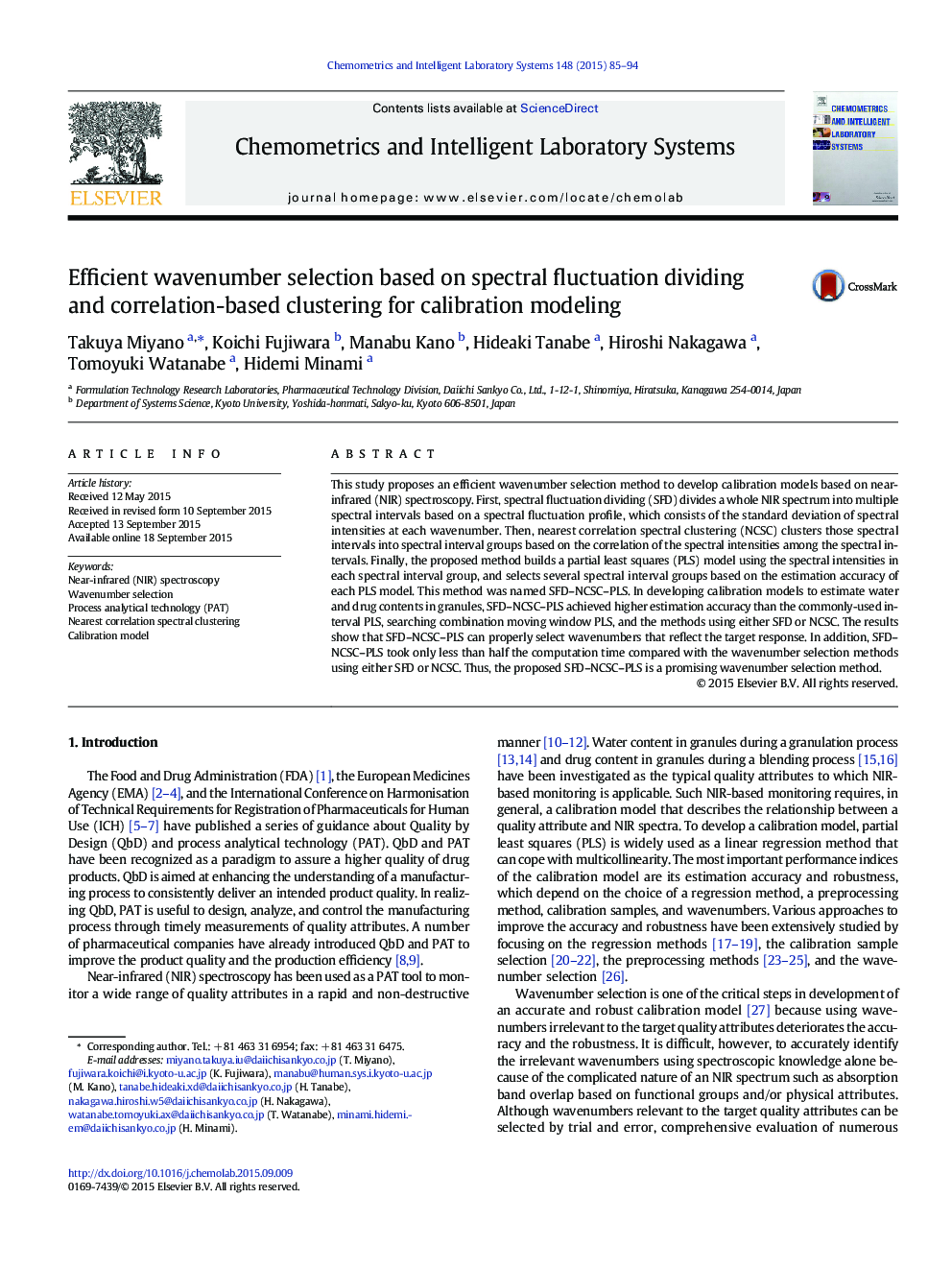| Article ID | Journal | Published Year | Pages | File Type |
|---|---|---|---|---|
| 1179644 | Chemometrics and Intelligent Laboratory Systems | 2015 | 10 Pages |
•An efficient wavenumber selection method for near-infrared spectroscopy is proposed.•A whole spectrum is divided into spectral intervals based on the fluctuation profile.•Spectral intervals are clustered into interval groups according to the correlation.•The group-based method achieved high estimation accuracy with low computational load.
This study proposes an efficient wavenumber selection method to develop calibration models based on near-infrared (NIR) spectroscopy. First, spectral fluctuation dividing (SFD) divides a whole NIR spectrum into multiple spectral intervals based on a spectral fluctuation profile, which consists of the standard deviation of spectral intensities at each wavenumber. Then, nearest correlation spectral clustering (NCSC) clusters those spectral intervals into spectral interval groups based on the correlation of the spectral intensities among the spectral intervals. Finally, the proposed method builds a partial least squares (PLS) model using the spectral intensities in each spectral interval group, and selects several spectral interval groups based on the estimation accuracy of each PLS model. This method was named SFD–NCSC–PLS. In developing calibration models to estimate water and drug contents in granules, SFD–NCSC–PLS achieved higher estimation accuracy than the commonly-used interval PLS, searching combination moving window PLS, and the methods using either SFD or NCSC. The results show that SFD–NCSC–PLS can properly select wavenumbers that reflect the target response. In addition, SFD–NCSC–PLS took only less than half the computation time compared with the wavenumber selection methods using either SFD or NCSC. Thus, the proposed SFD–NCSC–PLS is a promising wavenumber selection method.
